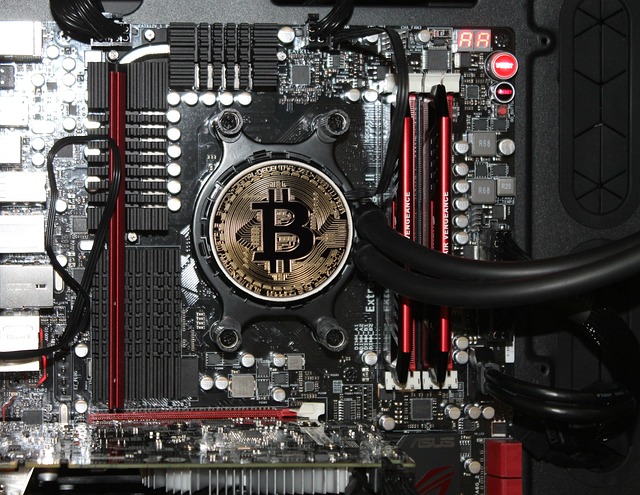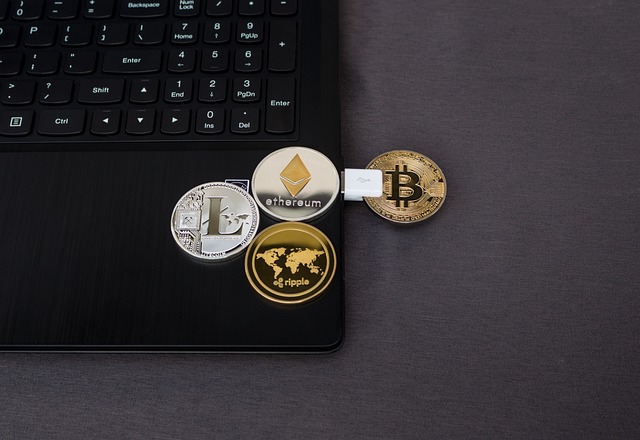DeFi System Unleashed: A Deep Dive into Its Components
DeFi System Unleashed: A Deep Dive into Its Components

DeFi: What Is It and Why Is It Trending?
Decentralized Finance, more commonly known as DeFi, has become a buzzword in the world of cryptocurrency and blockchain. Put simply, DeFi refers to a financial system that operates without the need for intermediaries like banks or other centralized authorities. Instead, it leverages the power of blockchain technology to enable peer-to-peer transactions and smart contracts.
So, why is DeFi trending right now? Well, one key reason is its potential to revolutionize traditional financial services. DeFi allows individuals to access a wide range of financial products and services, such as lending, borrowing, trading, and earning interest, without the need for a middleman. This opens up a whole new world of opportunities for people who may have been previously excluded from the traditional financial system. Additionally, DeFi provides greater transparency, security, and efficiency compared to traditional finance, which has attracted the attention of investors, developers, and technologists alike. As a result, we are witnessing a rapid growth in the DeFi ecosystem, with innovative projects and platforms emerging almost daily.
Understanding the Key Players in the DeFi Ecosystem
When it comes to the DeFi ecosystem, understanding the key players is essential. These players are the individuals, projects, and platforms that form the foundation of the decentralized finance landscape. One of the main players in the DeFi space are decentralized exchanges (DEXs). DEXs eliminate the need for intermediaries, allowing users to trade and swap cryptocurrencies directly with one another.

Another vital player in the DeFi ecosystem is decentralized lending and borrowing platforms. These platforms enable users to lend out their crypto assets to earn interest, or borrow assets by providing collateral. With decentralized lending and borrowing, individuals can access financial services without the need for traditional banks or credit institutions. Aave and Compound are among the most well-known decentralized lending protocols, attracting users with their competitive interest rates and seamless user experience. By unlocking the power of decentralized lending and borrowing, DeFi is revolutionizing the way individuals access financial opportunities.
• Decentralized exchanges (DEXs) are a key player in the DeFi ecosystem
• DEXs eliminate the need for intermediaries and allow direct trading between users
• Popular DEX platforms include Uniswap and SushiSwap
• These platforms offer a wide range of token options while ensuring user control over funds
• Decentralized lending and borrowing platforms are also vital players in DeFi
• Users can lend out their crypto assets to earn interest or borrow assets with collateral
• Aave and Compound are well-known decentralized lending protocols
• These platforms attract users with competitive interest rates and user-friendly interfaces
By incorporating these key players, the DeFi ecosystem provides individuals with greater financial opportunities outside of traditional banking systems. With decentralized exchanges, users have more control over their trades, while decentralized lending platforms enable access to loans without relying on credit institutions. As the DeFi landscape continues to evolve, it is crucial to understand these key players and their roles in shaping the future of finance.
Exploring the Decentralized Exchange (DEX) Platforms
Decentralized Exchange (DEX) platforms have emerged as a significant pillar of the DeFi ecosystem, revolutionizing the way individuals trade cryptocurrencies. Unlike traditional exchanges, which are centralized and rely on intermediaries, DEX platforms operate on distributed networks, allowing users to trade directly with each other. Through the use of smart contracts and automated matching algorithms, DEX platforms enable instant and secure peer-to-peer transactions, eliminating the need for middlemen. This not only enhances privacy and security but also reduces trading fees and provides users with complete control over their funds.
One of the key advantages of DEX platforms is their transparent nature. Unlike their centralized counterparts, DEX platforms do not require users to create accounts, provide personal information, or go through lengthy verification processes. This opens up the world of crypto trading to anyone with an internet connection, enabling greater access and inclusivity. Furthermore, DEX platforms also encourage the listing of a wide range of tokens, even those that may not meet the stringent listing requirements of centralized exchanges. This fosters a more diverse and vibrant ecosystem, allowing users to discover and trade a plethora of unique and innovative digital assets.
The Rise of Decentralized Lending and Borrowing
Decentralized lending and borrowing have emerged as one of the most innovative and popular use cases within the DeFi ecosystem. This revolutionary approach allows individuals to lend and borrow digital assets without relying on traditional middlemen such as banks or financial institutions.

One of the standout features of decentralized lending platforms is the elimination of intermediaries. Smart contracts powered by blockchain technology facilitate the lending and borrowing process, ensuring transparency, security, and efficiency. Loans are issued and repaid automatically, eliminating the need for manual processing and reducing the risk of human error. Moreover, decentralized lending platforms offer competitive interest rates and allow borrowers to use their digital assets as collateral, providing additional flexibility for users. As this sector continues to develop, we can expect to see further innovations that enhance the accessibility and usability of decentralized lending and borrowing for the wider population.
Unleashing the Power of Automated Market Makers (AMMs)
Automated Market Makers, or AMMs, have emerged as one of the key pillars of the fast-growing DeFi ecosystem. These smart contracts enable users to trade digital assets without the need for traditional order books, providing a decentralized and efficient way to exchange tokens. Unlike centralized exchanges, AMMs leverage algorithms and liquidity pools to facilitate trades, making it possible for anyone with an internet connection to participate in the market. This democratization of trading has opened up a world of opportunities for both small-scale investors and larger players, eliminating the need for intermediaries and allowing users to retain control over their assets.
The power of AMMs lies in their ability to ensure liquidity for various tokens, even those with low trading volumes. By creating liquidity pools, users can contribute their assets to these pools and earn fees on trades conducted through the AMM. This mechanism not only incentivizes active participation but also enhances the overall liquidity of the market. Additionally, AMMs enable seamless token swaps as they eliminate the need for a buyer and a seller to be present simultaneously. This feature has become particularly popular within the DeFi community as it allows users to easily trade between different tokens and participate in various yield farming opportunities without relying on a centralized authority.
Digging into the World of Decentralized Stablecoins
Decentralized stablecoins are at the forefront of the ever-evolving DeFi landscape. These unique digital assets aim to provide stability and reduce volatility in cryptocurrency markets. Unlike traditional stablecoins that are usually issued by a centralized entity and backed by a reserve of fiat currency, decentralized stablecoins rely on smart contracts and decentralized protocols to maintain their peg. This innovative approach brings forth a number of advantages, such as greater transparency, increased security, and programmable functionalities.
One popular type of decentralized stablecoin is the algorithmic stablecoin. These stablecoins utilize complex algorithms to automatically adjust their supply in response to changes in demand, aiming to maintain a stable value. While algorithmic stablecoins can be highly volatile at times, their decentralized nature allows for community participation in stabilizing the price through actions like buying or selling the stablecoin. This community-driven approach empowers users and promotes a more inclusive financial system.
The Role of Decentralized Governance in DeFi
Decentralized governance plays a crucial role in the world of DeFi. Unlike traditional centralized systems where decision-making power lies with a single entity, DeFi protocols rely on decentralized governance to make important decisions. In this model, token holders have the power to propose and vote on changes to the protocol. This level of decentralized decision-making ensures that no single party can manipulate or control the protocol, fostering transparency and fairness.
The role of decentralized governance goes beyond just decision-making. It also fosters community participation and ownership. With the ability to influence the protocol’s direction, token holders are actively involved in shaping the future of DeFi projects. This community-driven approach not only encourages a diverse range of perspectives but also creates an environment where users feel empowered and invested in the success of the protocol. Additionally, decentralized governance allows for continuous improvements and updates to the protocol, enabling DeFi projects to adapt rapidly to changing market conditions and user needs.
Unlocking Yield Farming and Staking Opportunities
Yield farming and staking have become hot topics in the world of DeFi, drawing immense attention from both investors and enthusiasts. These innovative concepts allow individuals to earn passive income by simply keeping their cryptocurrencies locked in specific protocols. On one hand, yield farming involves lending out assets to earn interest or rewards in the form of additional tokens. This process often requires users to provide liquidity to decentralized exchanges or lending platforms, taking advantage of various incentives offered. On the other hand, staking involves actively participating in the validation and security of a blockchain network by holding and locking a certain amount of tokens. In return, stakers are rewarded with additional tokens as a way to incentivize their contribution to the network’s operations. Both yield farming and staking provide individuals with opportunities to make their cryptocurrency holdings work for them, enabling them to generate passive income in an evolving digital economy.
The Potential Risks and Security Challenges in DeFi
DeFi, with its promising potential for financial freedom and innovation, undeniably comes with its fair share of risks and security challenges. As the sector continues to grow rapidly, it’s crucial for users and investors to be aware of these potential pitfalls.
One notable risk in the DeFi space is the prevalence of smart contract vulnerabilities. Smart contracts, the self-executing agreements at the core of DeFi protocols, are susceptible to bugs and coding errors. Any glitch in the code can result in substantial financial loss or even complete collapse of the system. Consequently, users must exercise caution and thoroughly audit the smart contracts before engaging with them, ensuring they are built on a sturdy foundation. Additionally, continuous monitoring and updates by the developers are essential to prompt detection and resolution of any security issues that may arise.
Another significant challenge is the prevalence of malicious actors seeking to exploit vulnerabilities within the DeFi ecosystem. With billions of dollars at stake, hackers are consistently searching for weaknesses in DeFi protocols to conduct attacks. From phishing attempts to flash loan exploits, these security breaches can lead to significant monetary losses for individuals and the wider DeFi community. Thus, it’s of utmost importance for investors to maintain strong security practices, such as utilizing hardware wallets, implementing multi-factor authentication, and carefully scrutinizing the platforms they choose to interact with.
The potential risks and security challenges in DeFi cannot be ignored or underestimated. While the space undeniably holds immense potential, it is essential for participants to proceed with caution, conduct thorough research, and adopt robust security measures to navigate these challenges successfully. By understanding and actively addressing these risks, the DeFi ecosystem can continue to evolve, bringing about new possibilities for the future of finance.
The Future of DeFi: Innovations and Adoption
In the fast-evolving landscape of DeFi, the future shines bright with endless possibilities.

Moreover, as the DeFi ecosystem matures, we can expect to see increased integration and collaboration between different DeFi platforms. Interoperability will play a crucial role in enabling seamless transactions across various protocols, further enhancing the accessibility and utility of DeFi applications. Additionally, with the advancements in scalability, we might witness a significant reduction in transaction fees and execution times, making DeFi more practical for everyday use. All these developments will lay the foundation for widespread adoption of DeFi, bringing the power of decentralized finance to millions around the world. The future of DeFi is not just about innovation; it’s about transforming the financial landscape and creating a more inclusive and accessible financial system for all.
What is DeFi and why is it trending?
DeFi, short for Decentralized Finance, refers to the use of blockchain technology and cryptocurrencies to provide traditional financial services. It’s trending because it offers numerous benefits like greater accessibility, transparency, and the ability to bypass intermediaries.
Who are the key players in the DeFi ecosystem?
The key players in the DeFi ecosystem include developers, users, liquidity providers, decentralized exchanges (DEXs), lending/borrowing platforms, stablecoin projects, and decentralized autonomous organizations (DAOs).
What are DEX platforms?
DEX platforms are decentralized exchanges that allow users to trade cryptocurrencies directly from their wallets without the need for intermediaries or centralized authorities. They offer greater security and control over assets.
How does decentralized lending and borrowing work in DeFi?
Decentralized lending and borrowing platforms enable individuals to lend their cryptocurrencies and earn interest or borrow assets by collateralizing their existing holdings. These platforms eliminate the need for traditional banks or credit checks.
What are Automated Market Makers (AMMs)?
AMMs are algorithms that use smart contracts to facilitate decentralized trading on DEX platforms. They replace traditional order books and allow users to trade assets based on predefined mathematical formulas.
What are decentralized stablecoins?
Decentralized stablecoins are cryptocurrencies designed to maintain a stable value by pegging them to a reserve asset, such as a fiat currency or a basket of assets. They provide stability and serve as a medium of exchange within the DeFi ecosystem.
How does decentralized governance play a role in DeFi?
Decentralized governance allows users to actively participate in decision-making processes within DeFi protocols. It grants them voting rights to propose and vote on changes, ensuring decentralized control and community involvement.
What are yield farming and staking opportunities in DeFi?
Yield farming involves users providing liquidity to decentralized platforms and earning rewards in the form of additional tokens. Staking involves locking up cryptocurrencies to support network operations and receiving rewards for validating transactions.
What are the potential risks and security challenges in DeFi?
Some potential risks in DeFi include smart contract vulnerabilities, hacking incidents, and market manipulation. Additionally, there may be risks associated with the lack of regulation and potential scams in the space.
What are some future innovations and adoption prospects for DeFi?
The future of DeFi holds exciting possibilities, such as improved scalability, cross-chain interoperability, integration with traditional finance, and the emergence of new financial instruments. As adoption grows, DeFi has the potential to revolutionize the financial industry.
Todays Featured Product:
Buy, exchange and grow your crypto securely with a Ledger hardware wallet, combined with the Ledger Live app. It’s never been easier to keep your crypto safe and accessible. Buy direct from Ledger.com and get todays Special Offers Here.




